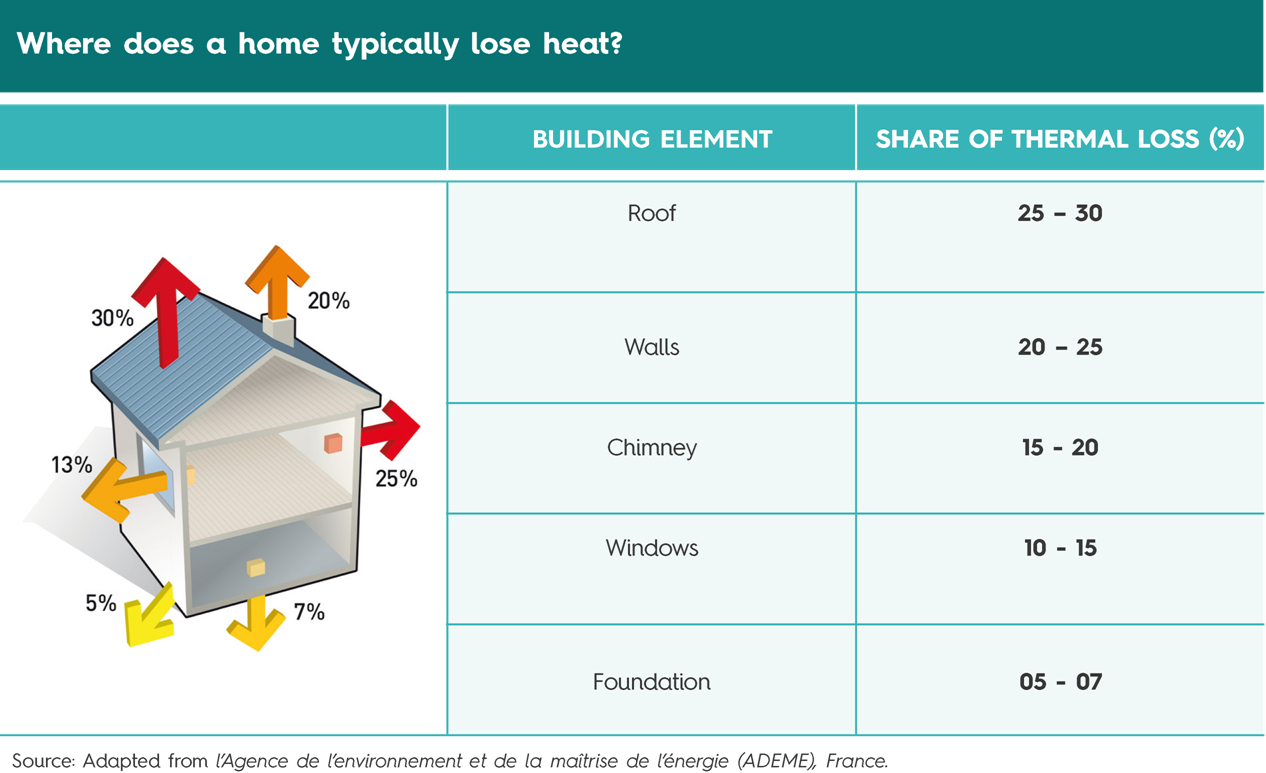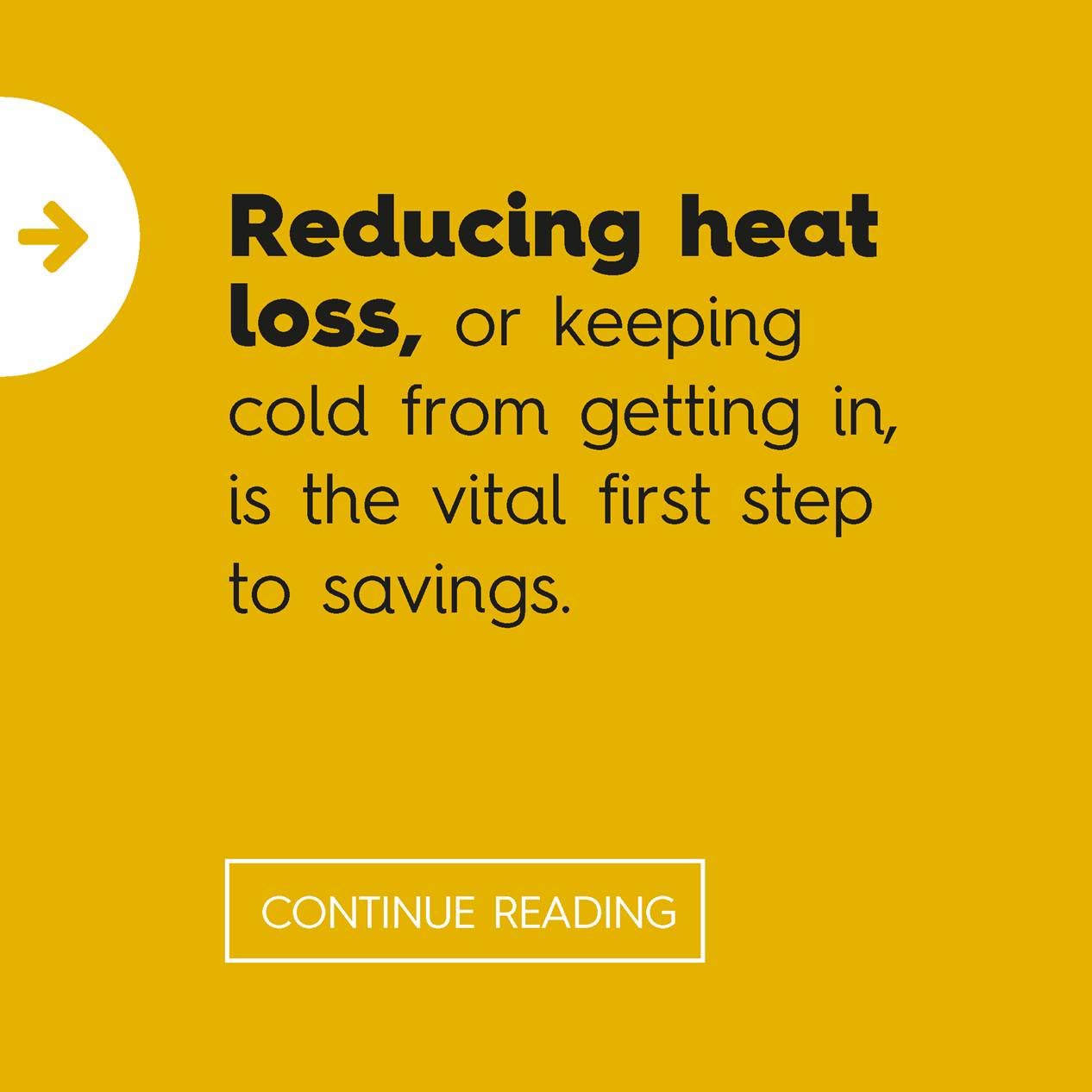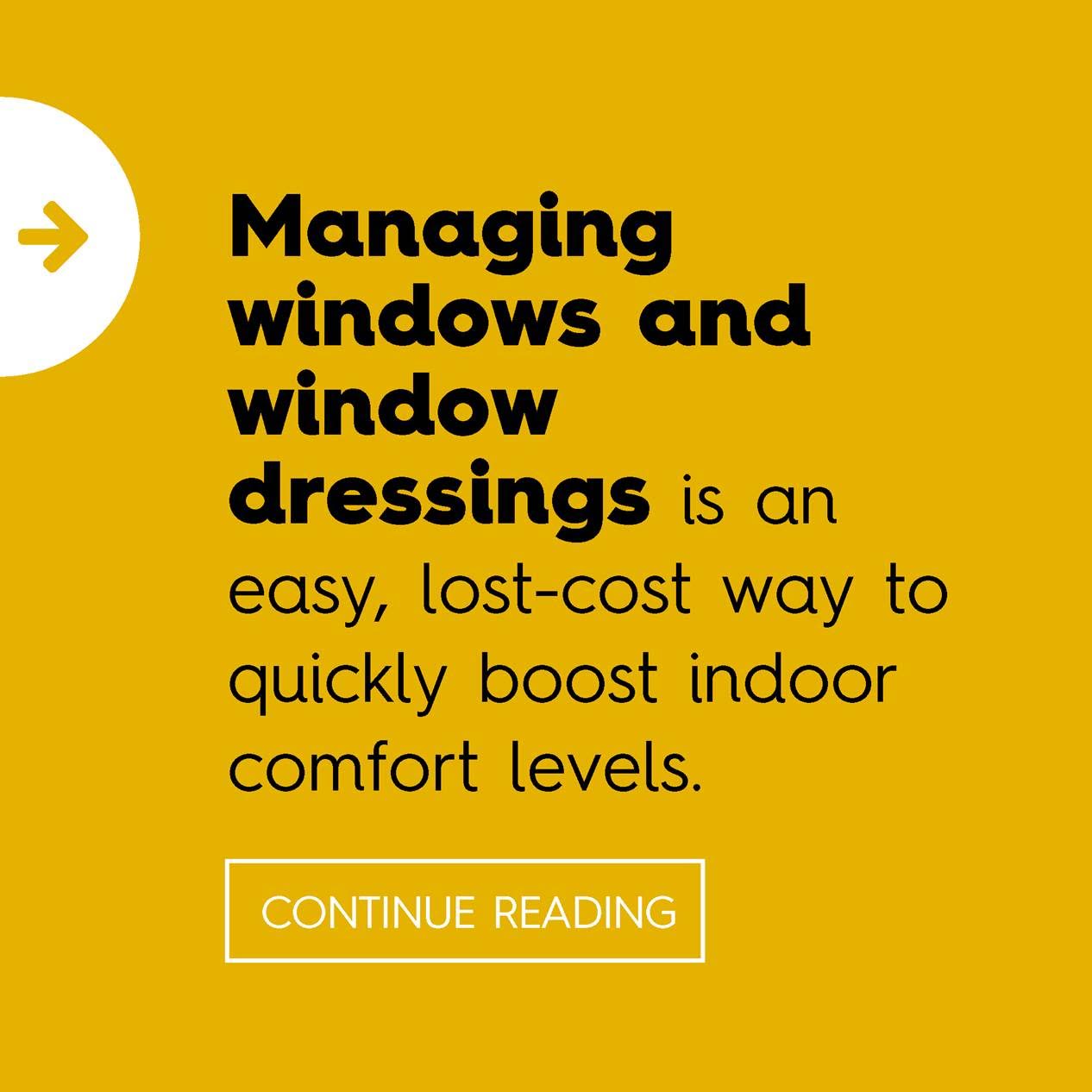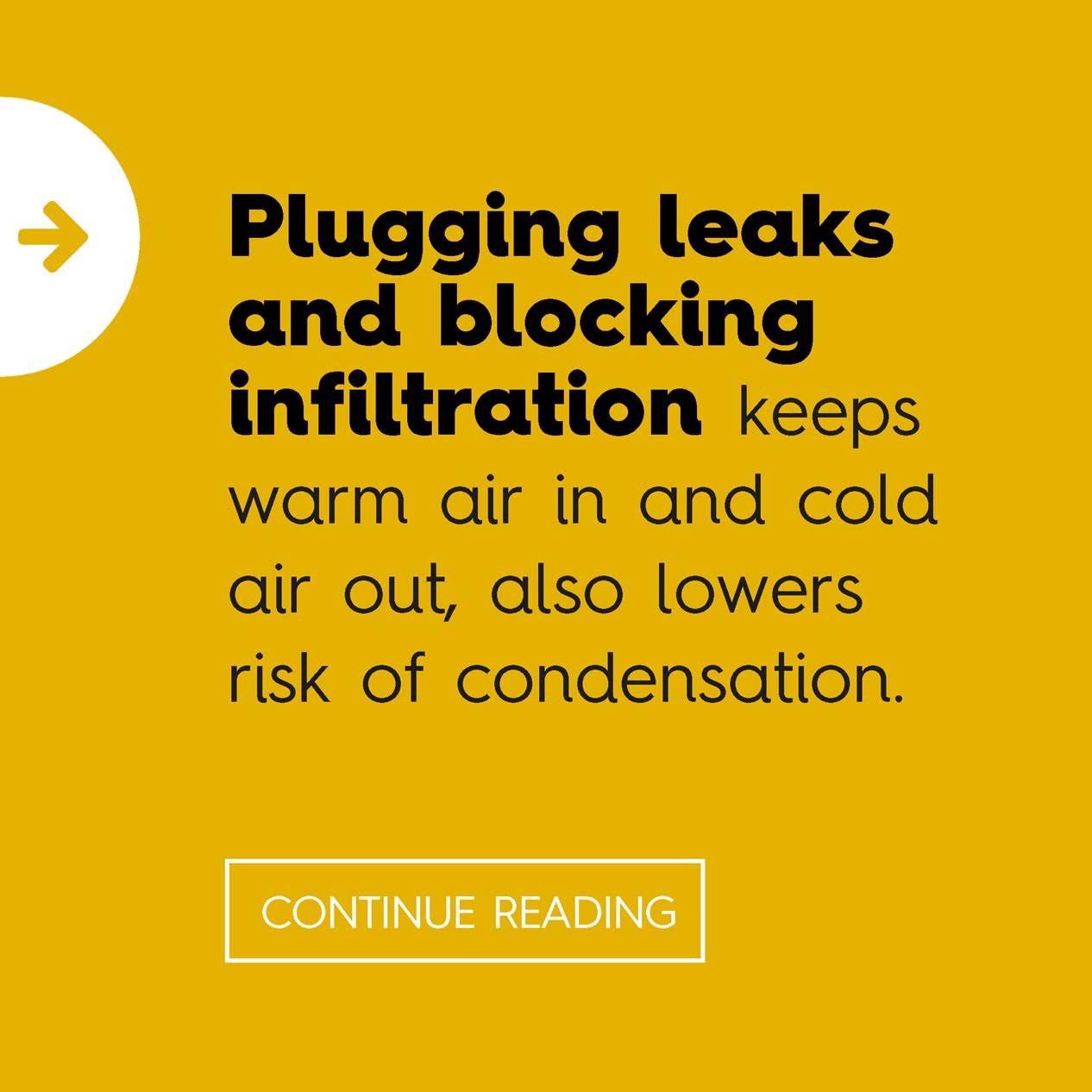Heating and Cooling
Making up 60% of home energy use, it's no surprise that the need for heating is often what drives people into fuel poverty.
Similar figures apply for cooling demand in hot climates. In either case, there's a strong logic for taking action to reduce the cost of keeping a home comfortable. And many steps occupants can take, some of which will quickly deliver a payback on the initial expense.
Heating & Cooling Tips
X
Thermal (heat) loss can vary widely from one dwelling to another, depending on its size and shape, including the number of floors. For a house, being detached or semi-detached makes a big difference. An apartment's location within the building has significant impacts.

The degree of heat loss – and therefore the cost of energy bills – depends on factors that make up what's known as the 'building envelope': the thickness of and materials used for the foundation and walls; the level of insulation; the type of windows installed; the flow of ventilation; and the overall leakage area.
While measures to improve the dwelling itself are the most effective long-term solution, they often carry a high up-front cost, and require substantial planning. To improve comfort in the short term, COLD@HOME first offers some simple, low-cost actions people can take right away.
Finally, dress yourself and your home for the reality of winter cold and draughts. Put on a sweater or wrap your neck with a light shawl before turning up the heater. Lay out carpets and wear slippers to protect your feet from cold coming through the floor.
Previous Tip
Next Tip
X
Boost heating system efficiency, simple steps help ensure heat is delivered where needed most.
- Purge the radiators: to improve the flow of hot water among radiators, simply use a wrench to gently open the valve on each (placing a cup or bowl below in case any water escapes). Once the water begins to flow (i.e. there are no air bubbles or gurgling sounds), quickly shut the valve.
- Clean the boiler and exhaust outlet: brush dust and debris, and change the filter regularly (most experts recommend once per year). This will improve overall efficiency and reduce the risk of harmful emissions (carbon monoxide or CO, for example).
- Fit better controls: to make sure the boiler delivers heat only where and when it is needed; unnecessarily heating unused spaces can drive up heating bills.
- Insulate pipes in basement or attic: wrapping pipes helps reduce heat loss in uninhabited areas, thus delivering more heat where people need it. Split-foam insulation can be purchased at the hardware store for relatively low cost and installed easily; savings on energy bills will quickly repay the expense.
Previous Tip
Next Tip
X
Managing windows and window dressings is an easy, lost-cost way to quickly boost indoor comfort levels.
- Shutter up, if you can: if the house or flat has shutters, be sure to close them at night for extra protection against thermal loss.
- Work the curtains for indoor comfort: open curtains during the day to let in the winter sun, but close at night to keep warm air from escaping and outdoor cold air from entering.
- Lined curtains deliver added protection: adding a layer of backing to curtains is like putting on extra layers of clothing: it makes it that much harder for warm and cold air to change places. Curtains can be lined with almost any fabric, including low-cost material or even re-used bed sheets. Even if it's necessary to purchase fabric, the cost will quickly be regained through energy bill savings.
- A little space between reduces condensation: allowing a few centimetres of space between the window surface and the curtains creates a cool zone; warm air from the room cools gradually, avoiding the 'shock' of a hitting a cold surface that causes water droplets to form.
- Install a pelmet box for extra gain: covering the tops of curtains with a decorative pelmet box can serve the dual purpose of reducing heat loss through windows.
Previous Tip
Next Tip
X
Plugging leaks and blocking infiltration keeps warm air in and cold air out, also lowers risk of condensation.
- Draft proofing delivers the highest return on a low investment: finding and blocking leaks can make a world of difference when it comes to indoor comfort. A simple way to locate the draughty places is with a stick of incense or a smoke pencil (which can be found in most hardware stores). Hold the lit stick or pencil close to windows, doors, fireplaces, and areas where plumbing, vents or wiring pass through walls. If the smoke goes up, a good seal is in place. If not, the more horizontal the smoke blows, the worse the problem. Be sure to investigate attics, basements and places you don't normally spend time.
- Door sweeps and draft guards are the best way to protect against heat loss or cold air entry around doors to the outside, or even between warm and cool areas inside the home. Usually costing about EUR 10 at a home supply store, door sweeps can be installed without taking the door off its hinges. Simply slide the sweep under the door and cut off excess length with a hacksaw. A few screws, provided with the sweep, will hold it in place. Draft guards are also available to stop drafts coming from under interior doors.
- Low-cost outlet safety caps will stop cold air from seeping in through electrical outlets on walls that face outdoors. This is also a safety measure for homes with young children who might try poking fingers or other objects in the outlet slots.
- Weather stripping with sticky adhesive can be easily applied to make a tighter seal on window and door frames. It usually costs only a few dollars or Euros per roll of a few metres (or yards).
- Exterior silicone caulking is a better solution around plumbing, ventilation or wiring; as implied by the name, it is best used on outside surfaces to avoid the risk of moisture build-up inside walls (which can eventually cause mould or rot). For larger voids, easy-to-apply insulating foam is the best option.




